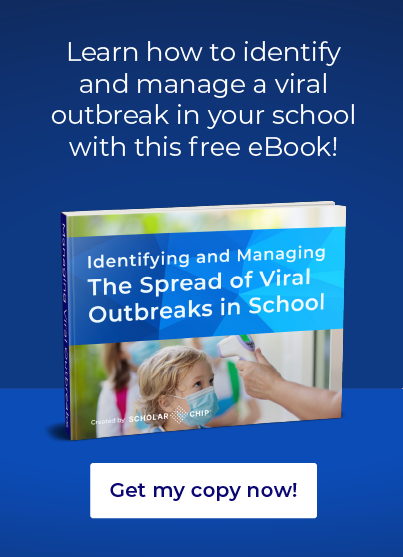In the past, parents have sometimes sent their children to school if they had a slight cough or a minor sore throat. This can no longer be the case. To prevent children from spreading disease to their fellow students or teachers, parents need to keep their children home from school even if their illness seems mild, as it could be COVID-19. Furthermore, parents must be informed about changes to classroom policies based on COVID-19 restrictions. Most schools will be changing class schedules, attendance times, and other requirements to prevent spreading. Because of these modifications, it’s more important than ever for schools to focus on improving school communication about illnesses. In this article, we’ll discuss the best ways to communicate with parents and communities during the pandemic.
Touch base with parents at the same dates and times each week.
Parents prefer to receive updates about various COVID-19-related issues on your campus and in the community about every one to three days. This means that even if there isn’t a new outbreak or development, you’ll still want to develop a consistent schedule for communication. Parents will come to rely on your updates, so make sure you never miss a scheduled posting.
Use multiple channels to ensure that all stakeholders are receiving communications.
In a Brookings study, parents who had computers were much more likely to be satisfied with communications than parents who did not. Therefore, you can focus on improving school communication about illnesses simply by using multiple channels. This means sending out information via your website, social media channels, and email, and you could also incorporate texts or radio bulletins for parents who may not have consistent access to the internet.
Ensure that parents understand the changing routines.
The current school year isn’t the same as years past. That’s why it’s so important to communicate your policies to parents.
One significant change could be for parents who used to drop their children off at the campus before classes started. If your school has switched to staggered class schedules, however, these students cannot come early. So, it’s essential to communicate with parents about how these new schedules work.
If you have ScholarChip’s One Card, your students are given a unique card identifier. With this card, they can open building and classroom doors, but it will not function if they come too early or stay too late on campus. You must explain to parents that if they drop off their children too early or don’t arrange transportation after classes, students will be stranded outside of the school.
Assure parents that you’ll be able to contact trace if their children have been exposed to COVID-19.
Parents may worry that if their child comes into contact with COVID-19, they won’t know about it. A contagious child could spread the disease to older or sicker family members.
Using ScholarChip’s One Card and Secure Door Access Card readers gives you a plan to pass onto parents. By installing Secure Door Access Card readers on every door that students enter, you have maps of where exactly each student went on campus. If one student is diagnosed with COVID-19, you can then use these maps to trace their whereabouts and determine with whom they came into contact.
With plans like these in place, parents can feel more confident about their child’s safety in school.
Inform parents that they’ll be subject to screening if they come to campus.
Many parents may have grown accustomed to entering their children’s schools whenever they wanted. Unfortunately, this is no longer possible. This change may be hard for some parents to accept. That’s why it’s crucial to share these modifications when improving school communication about illnesses.
If you’ve deployed ScholarChip’s Visitor Management System, for example, every visitor to your campus must check in at the main entry point both when they arrive and leave your campus. This ensures that you’ll be able to track down everyone who may have come into contact with a student who came down with COVID-19. Letting parents know that this is your new procedure will cut down on issues that may arise if parents intend to come onto campus as frequently and freely as they once did.
Before the COVID-19 pandemic, you may not have had to communicate with parents and communities about illness that often. But now, these communications need to be more consistent, more straightforward, and easier to follow than ever before. After all, parents want to know that their children are being cared for at school. But you also need parents to take safety precautions to prevent spreading disease on your campus. These communication strategies will help you and your campus community become better aligned to preventing the spread of disease.
The ScholarChip team is dedicated to helping school leaders maximize the safety and well-being of students and the entire school community.
Now sure what you should do to be able to identify and manage the spread of a viral outbreak in your school or school district? Feel free to chat with one of our school crisis communication specialists today!


